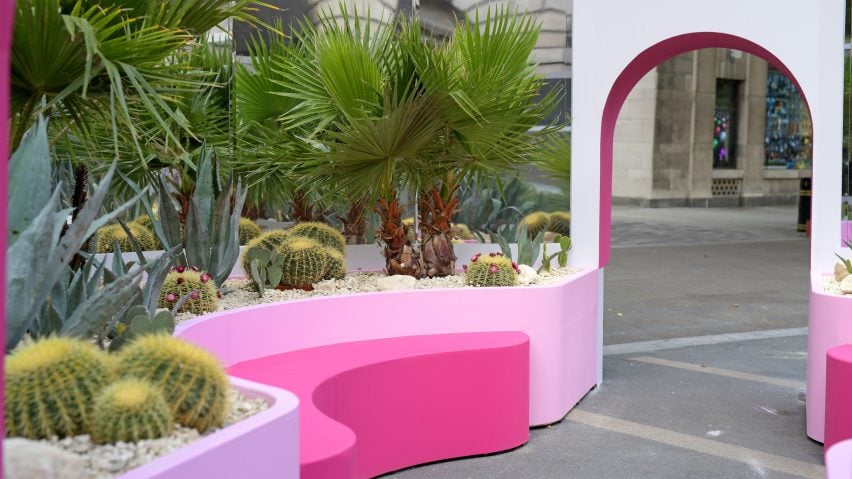
Nina Tolstrup channels Barbie Dreamhouses for Pavilions of Wonder
Designer Nina Tolstrup has positioned three immersive pavilions informed by Barbie Dreamhouses and Palm Springs' mid-century modern architecture on the Strand as part of London Design Festival.
Tolstrup, co-founder of London-based design studio Studiomama, worked in collaboration with Barbie creators Mattel and tourism agency Visit Greater Palm Springs to create the installation, titled Pavilions of Wonder.

"The theme for London Design Festival (LDF) this year is play, we originally were thinking of a fairground", Tolstrup told Dezeen of the installation, which is currently on display as part of LDF. "Eventually we went to Palm Springs and studied the amazing houses there."
Pavilions of Wonder celebrates the playful design of Barbie Dreamhouses, while also referring to the desert modernism of Palm Springs' mid-century modern architecture in California. This year marks the 65th anniversary of Barbie.
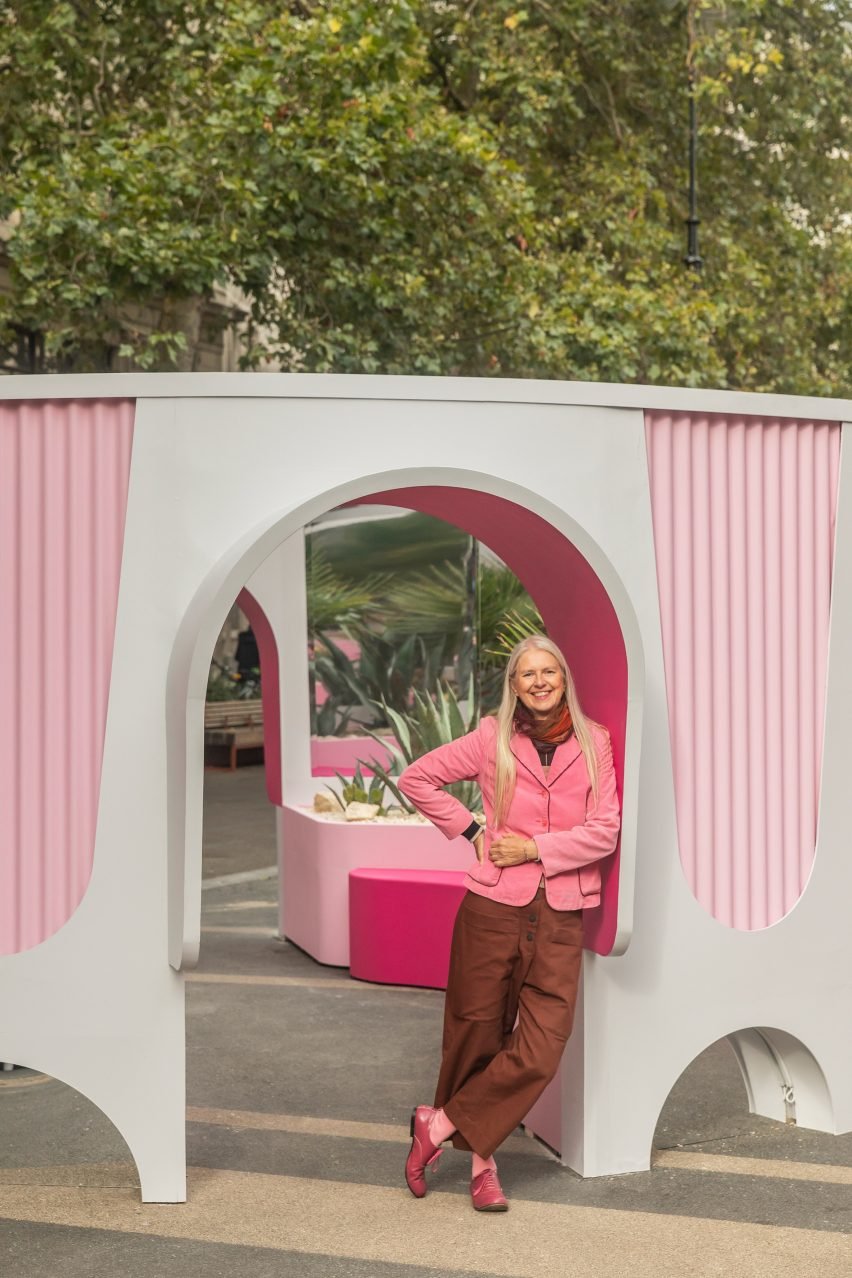
"The pavilions sit together in harmony on the Strand," the designer said. "We early on went in with our small traffic cones and marked it all out to know exactly how the pavilions would look, where they're sitting in the space and how this works to scale."
The first pavilion, Dream: Infinity Garden, is the largest of the three, measuring five meters in diameter with a height of three and a half meters. According to Tolstrup "the rest are within that footprint, but in different shapes."
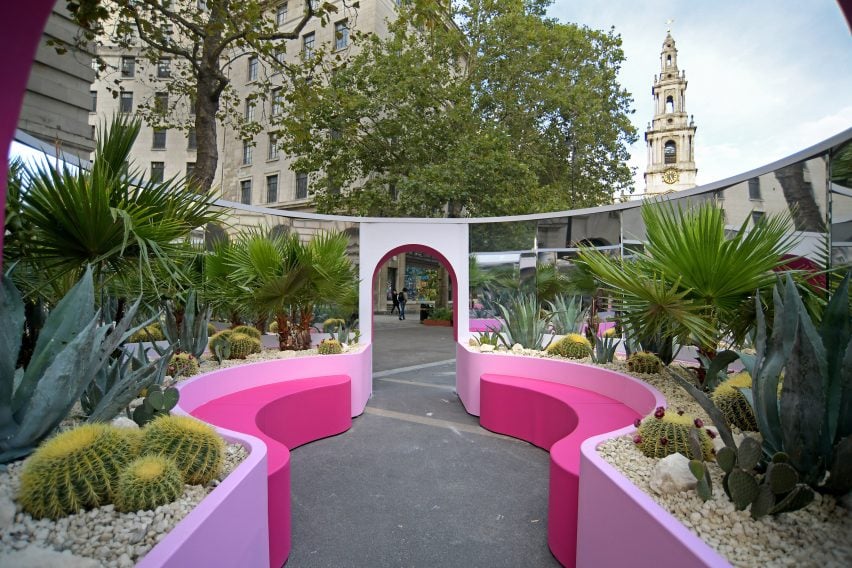
Inspired by the oasis landscape of Palm Springs and the resort city's surrounding mountain range, Tolstrup designed the first pavilion as a circular 360-degree structure that is mirrored on the inside with a cactus garden reflected in the mirrors.
Its rounded facade with upside-down arches was partially inspired by the bank buildings in the Palm Springs area, including the Coachella Valley Savings & Loan Bank designed by local architect E Stewart Williams.
"The climate is very much this outdoor living situation you get seduced by when you are there," the designer said. "Everything is highlighted on top of the mountains – cactus gardens and an incredible sunrise and sunset. We wanted to bring that into the Strand."
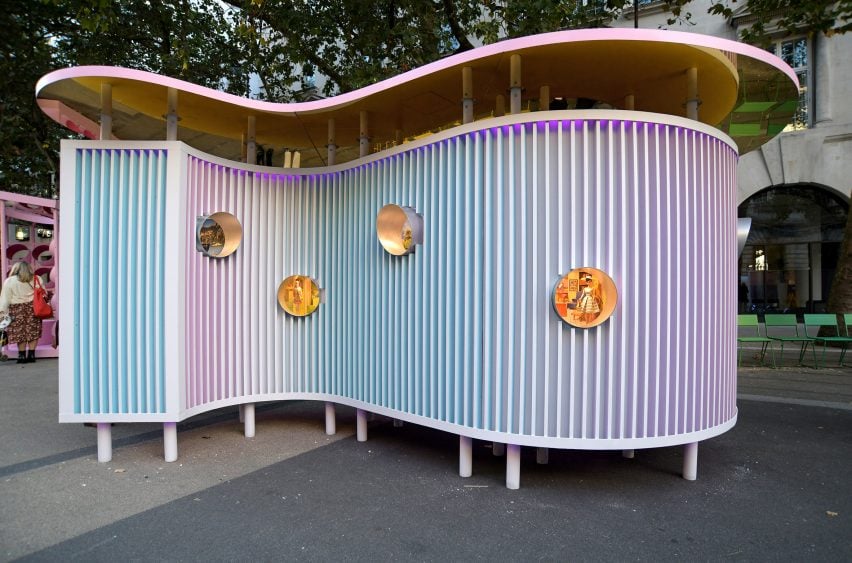
The pavilion was built by construction company Cloud & Horse using corrugated off-the-shelf MDF sheet material that can be flat-packed in sections and reused after dismantling, without needing to be cut into. Water-based pink paint was applied to one side of material.
According to Tolstrup, Swiss architect Albert Frey's second house in Palm Springs, Frey House II, informed this more sustainable and cost-effective way of building.
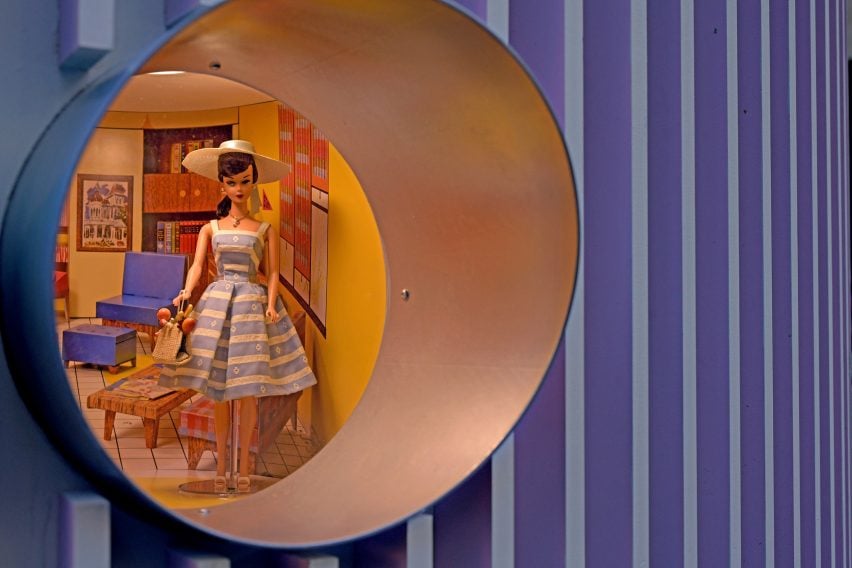
Discover: Design Stories, the second pavilion, was built with CNC-cut plywood held together on legs by a metal scaffold grid system that can also be dismantled.
A play on shape and form, this structure combines elements of the geometric signage commonly found in the Palm Springs area with aspects of straight, often squared, swimming pools. These are commonly associated with both mid-century architecture and the designs of Barbie Dreamhouses dating back to 1962.
"This pavilion is snake-shaped and has a mirrored roof," said Tolstrup. "In there we have peephole openings, windows into the Barbie world where you can look in and discover."
Mattel provided the design team with vignettes of Barbie Dreamhouse backdrops to inform the peepholes. Each of the structure's openings displays actual Barbie dolls throughout history.
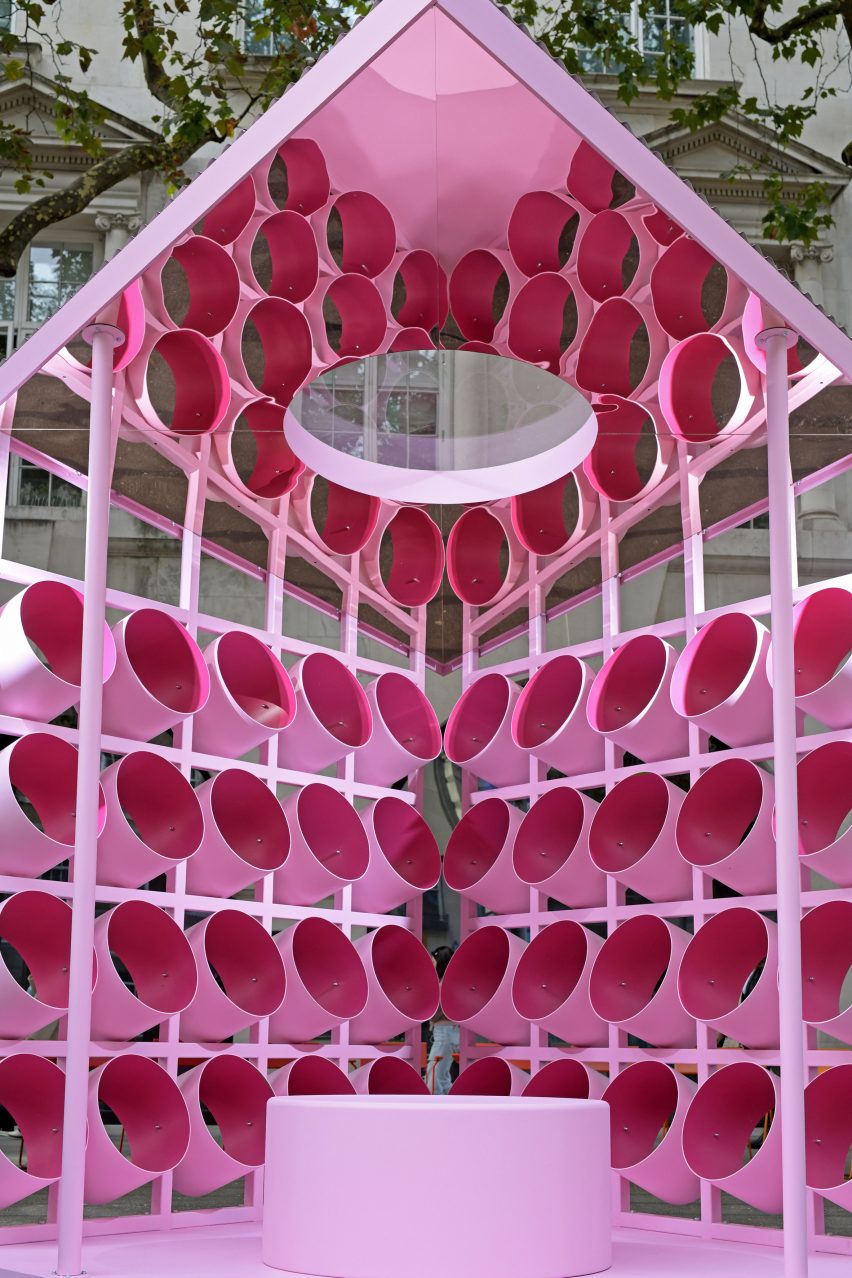
The third pavilion, Reflect: Playful Pauses, was inspired by the Palm Springs City Hall and the Tramway Gas Station, also designed by Frey.
Known for its distinct hyperbolic paraboloid canopy, the gas station has been referenced in previous Barbie Dreamhouses that incorporated similar overhanging roofs.
Built as a "very simple metal grid", the pavilion has a pointed roof along with ornamenting kaleidoscopic round circles made out of painted drainage tubes.
"The idea that your views are distorted or changing and reflecting when you walk around, that is an effect used in the front of the City Hall," said Tolstrup. "The qualities of mid-century architecture in Palm Springs, there's this wonderful simplicity to it."
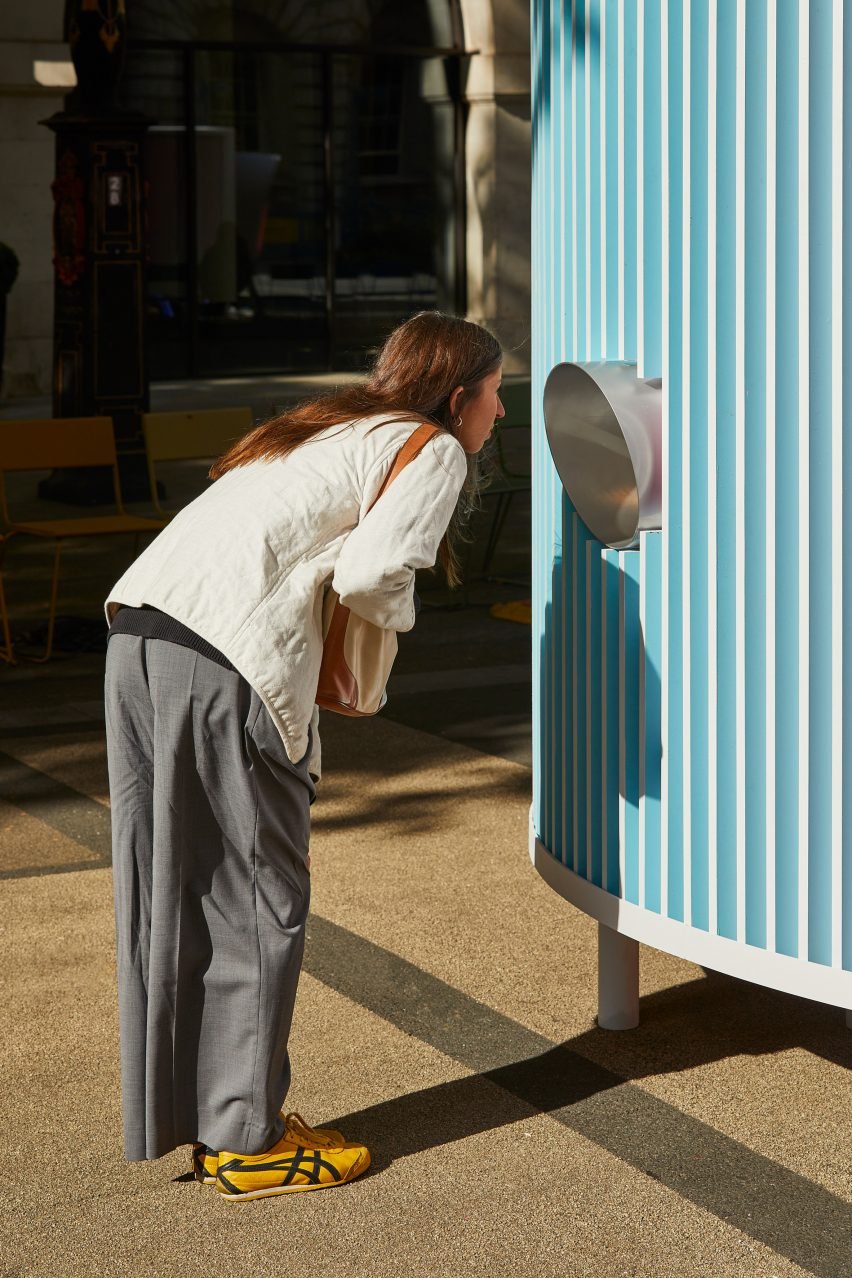
All three structures will be lit up at night, providing a colourful intervention to arouse the curiosity of pedestrians in the area.
"A very central London location like that in itself will generate a lot of traffic," said Tolstrup. "The installation is not a theme park but still inspired by that idea of play, you can walk around and have different experiences. It should invite for interaction, and it should be colourful."
Other LDF events and installations include a modular furniture showcase and an exhibition and auction of eyewear by designers and artists.
The photography is courtesy of London Design Festival.
Pavilions of Wonder is on show from 14 to 22 September as part of London Design Festival. See Dezeen Events Guide for an up-to-date list of architecture and design events taking place around the world.